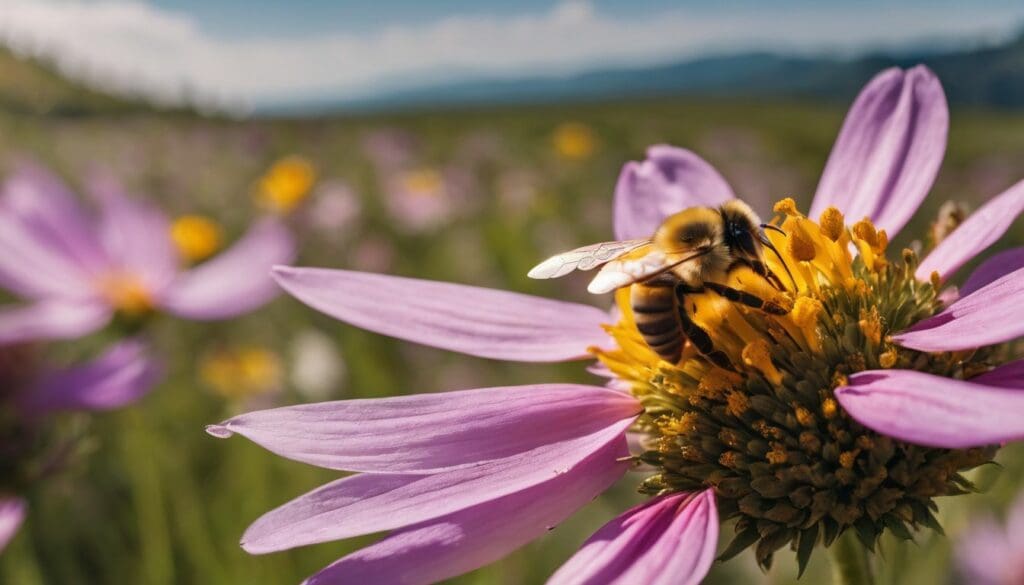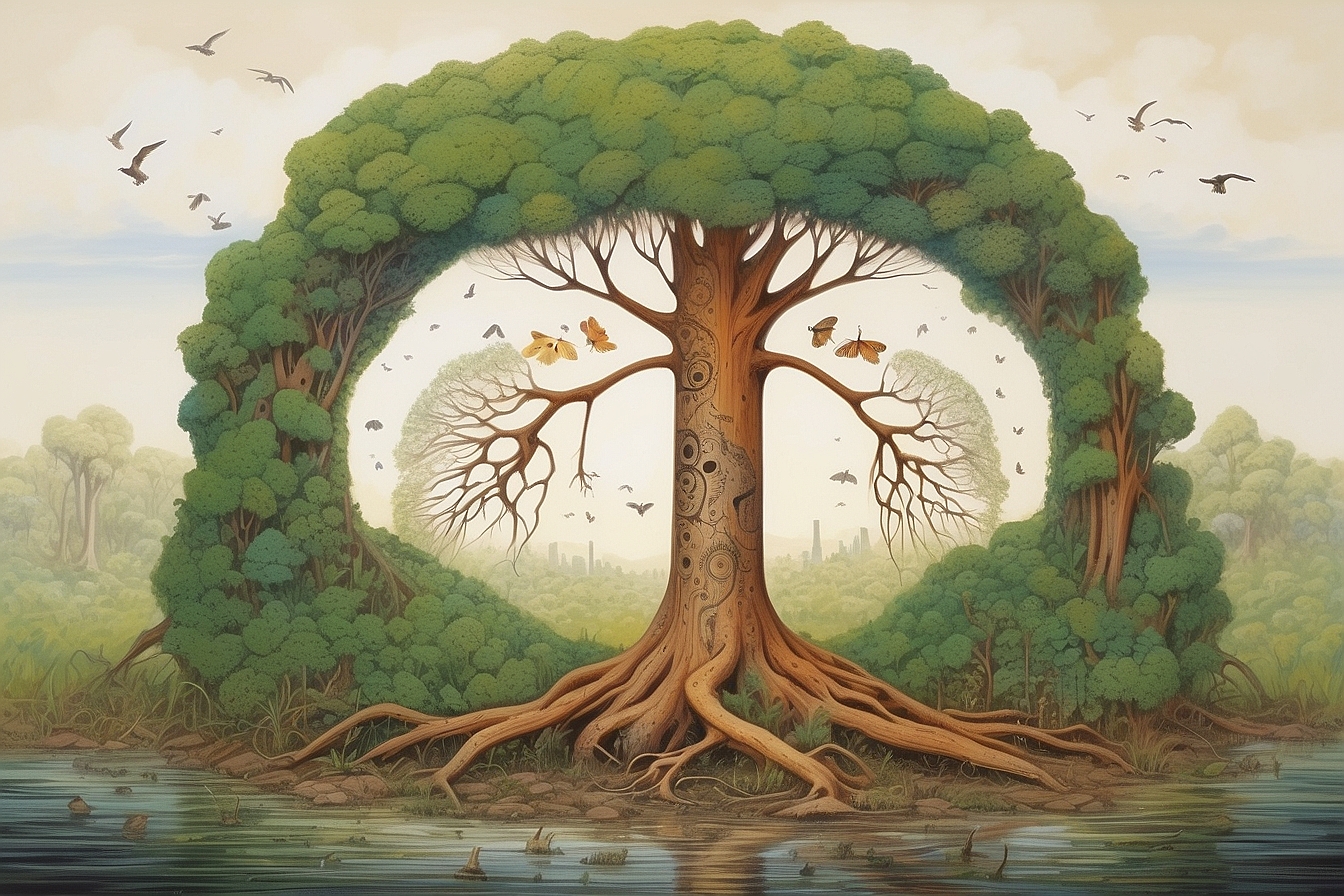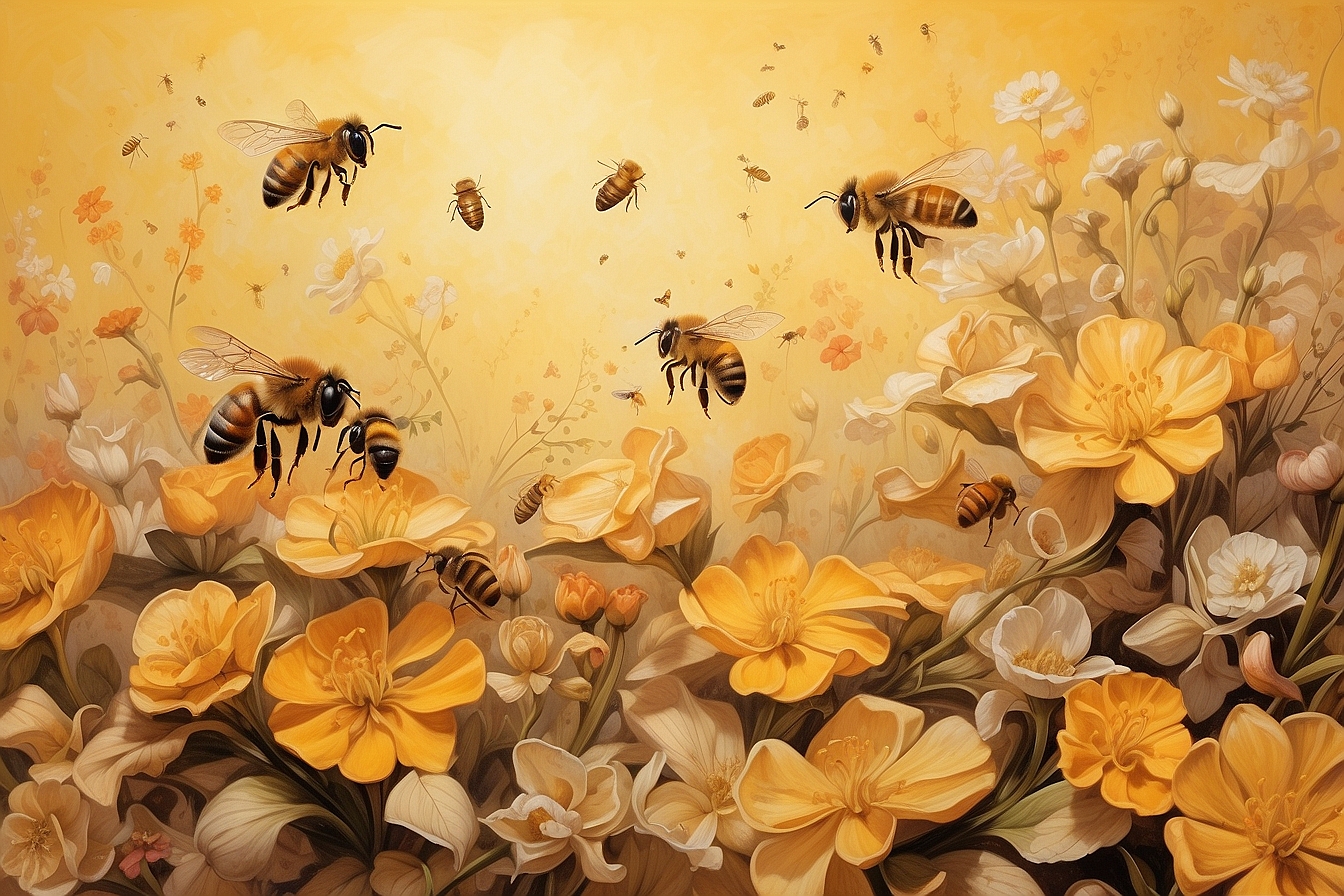Many of us have begun to notice a rather unsettling quiet in our gardens, an absence where once there was a gentle humming. It’s a small change that points to a much bigger problem within nature’s tapestry.
And we’re not the only ones who are noticing; the decline in bee populations is ringing alarm bells across the globe, touching each and every one of us – after all, did you realise that around one-third of what we eat owes its existence to bee pollination? In our latest blog post, we explore just why every single buzz is important and share some practical tips on how you can roll up your sleeves to help safeguard these indispensable little creatures.
So let’s band together – it’s high time we saved the buzz!
Key Takeaways
- Bees are vital for the pollination of over 90 important crops in North America, enhancing both the quantity and quality of our food supply.
- Pesticides like neonicotinoids pose a significant risk to bees, affecting their navigation and survival; adopting integrated pest management can help reduce this threat.
- The loss of natural habitats due to urban development and agriculture is causing bee numbers to decline; creating wildlife gardens with native plants can provide essential refuges for bees.
- Simple actions like planting bee – friendly flowers, avoiding harmful chemicals, and supporting local beekeepers contribute significantly to bee conservation efforts.
- Citizen science projects play an important role in tracking bee health as everyone can get involved in helping conserve these crucial pollinators.
The Importance of Bees
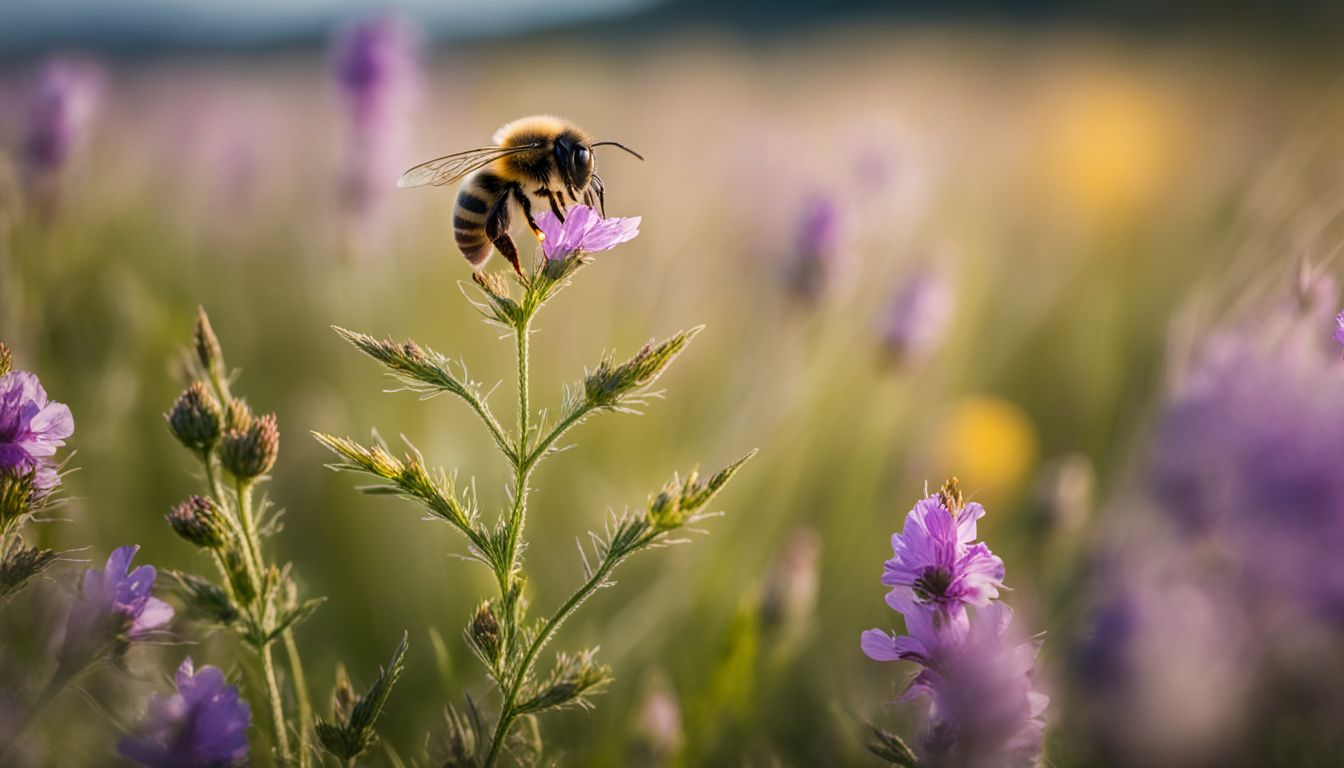
Bees are the unsung heroes of our environment, playing a crucial role that extends far beyond honey production. These industrious pollinators are essential for healthy ecosystems and abundant food supplies, supporting the growth of trees, flowers, and other plants.
Role in Crop Production
We often overlook the tireless work of bees in our food system, but they play a critical part. By visiting flowers to collect nectar and pollen, these tiny insect workers are essential for pollinating many of the crops we depend on.
Imagine walking through a field of sunflowers or almond trees; much of that abundant yield is thanks to bees transferring pollen from one plant to another, fertilising them in the process.
Crops such as berries, apples, and coffee rely heavily on bee pollination. In fact, honeybees alone enhance the growth of over 90 commercially grown crops in North America according to figures from the U.S. Department of Agriculture (USDA).
Without their buzzing diligence, our plates would look quite sparse and global food security could be at risk. It’s not just about quantity either; quality improves with proper pollination leading to fuller fruits and more robust harvests overall.
Supporting bee populations doesn’t just safeguard natural biodiversity – it helps sustain agriculture itself.
Contribution to Ecosystem Stability
Bees play a pivotal role in maintaining the balance of our ecosystems. They pollinate a myriad of plants, which not only produce fruits and seeds for human consumption but also create habitats for countless other species.
This cross-pollination supports biodiversity, ensuring varied plant life thrives, from wild bergamot to silky dogwood.
Their buzzing activity aids the reproduction of flowers and crops, fostering lush landscapes that absorb carbon dioxide and release oxygen. As they transfer pollen between blossoms, bees enable genetic diversity within plant populations—a crucial factor in resilience against pests and diseases.
Without them, we’d face severe ecological problems including losses of biodiversity and compromised food systems.
The Threats Bees Face
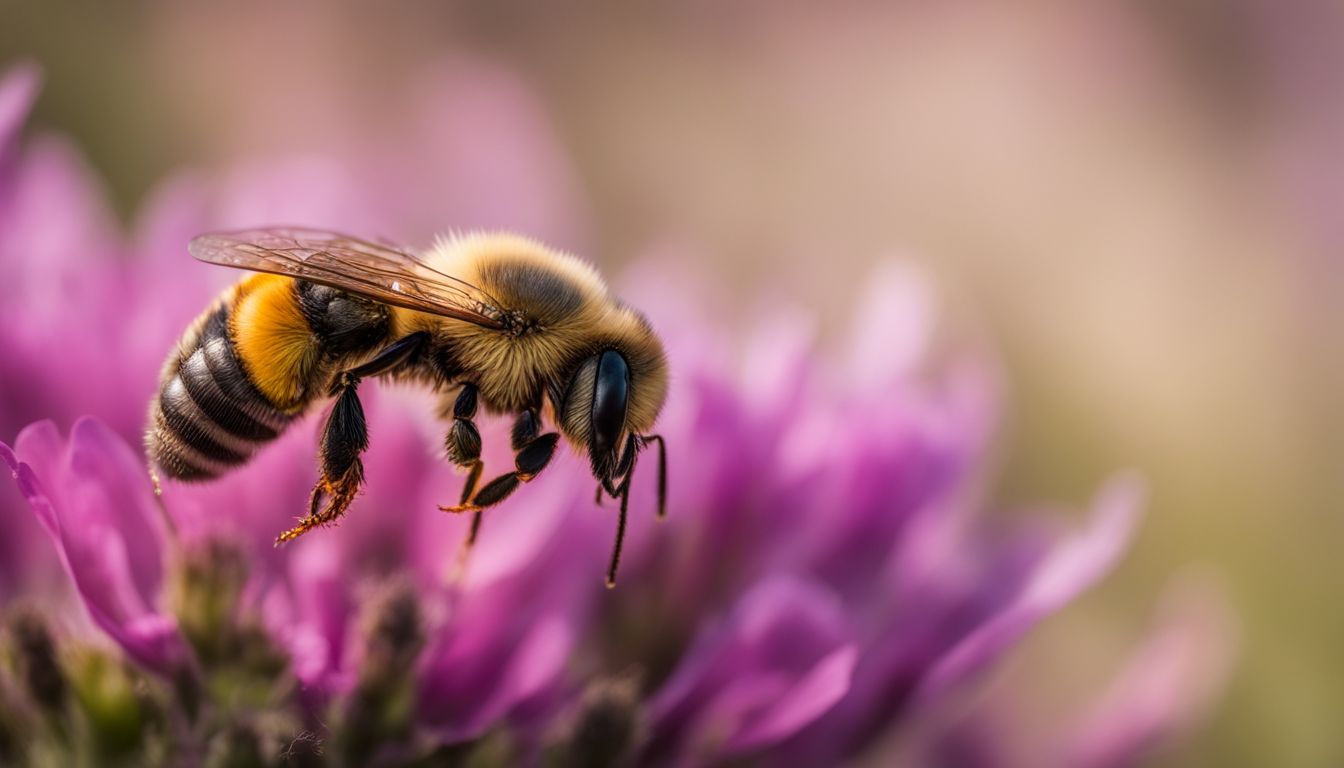
Bees are increasingly under pressure from a multitude of challenges that threaten their survival and, consequently, the balance of our ecosystems. We explore these critical issues in an effort to understand how we can better defend these vital pollinators.
Pesticide Exposure
We face a crucial challenge in protecting bees from the dangers of pesticides. Many farming practices include chemicals like neonicotinoids, which can devastate bee populations by affecting their ability to navigate and forage.
These substances often linger in the environment, posing long-term risks to both domesticated and wild bees. Pesticides not only harm worker bees but also jeopardise the survival of queen bees and their hives.
Taking action against pesticide exposure is essential for safeguarding our buzzing allies. We endorse practices such as integrated pest management, which reduce reliance on harmful chemicals.
Encouraging farmers to adopt wildlife-friendly methods helps ensure that pollinators like bumblebees and solitary bees can thrive alongside crop production. It’s up to us to urge policymakers to revise regulations on chemical use and support research into bee-friendly alternatives.
Loss of Habitat
Moving from the unsettling effects of pesticides, we must also turn our attention to another pressing issue bees face: their disappearing habitats. Many wild meadows and pastures once abuzz with pollinators have been transformed into vast stretches of monoculture crops or urban sprawl.
This loss has a profound impact on honeybees, bumblebees, and solitary species like mason bees and leaf-cutter bees. Without their natural homes filled with blooming flowers and nesting sites, these invaluable creatures struggle to survive.
Our changing landscapes leave little room for the plants that are crucial for bee health and nutrition. Native plant gardening could provide an oasis in a concrete desert for many native bees whose numbers dwindle each year.
By transforming lawns into wildlife gardens teeming with flowering natives like panicum virgatum (switchgrass) or solidago (goldenrods), we can help restore some balance. It’s in our hands to stem this tide by creating spaces where buzz pollination is not just possible but thrives – safeguarding the future of food production alongside bee conservation efforts.
How You Can Aid in Bee Conservation
We can all take steps to help save bees, who are essential pollinators in our environment. Here’s what we can do to make a difference:
- Plant bee – friendly flowers like beebalm and bergamots, which provide vital nectar and pollen for these buzzing creatures.
- Create pollinator gardens using plants that flower at different times of the year, ensuring bees have a consistent food source.
- Avoid using pesticides and herbicides that harm bees; opt for organic methods to keep your garden thriving.
- Leave some areas of your garden wild or with native plants like black willow and helianthus to offer bees a habitat.
- Support local beekeepers by buying their honey and other bee products; this helps sustain their efforts in nurturing bee populations.
- Put up bee houses in your garden to provide solitary bees such as sweat bees with places to nest.
- Participate in citizen science projects that track the health and numbers of bees, contributing valuable data to researchers.
- Lobby for policies that protect natural habitats from invasive plants and practices harmful to pollinator species.
Conclusion
Let’s embrace the challenge of protecting our buzzing friends. Every flower we plant, every pesticide we avoid, bolsters their survival. We forge a future where crops flourish and ecosystems thrive by committing to bee conservation.
Together, let’s ensure that every buzz continues to echo in a world rich with diverse life. It’s our shared responsibility; let’s not take it lightly.
FAQs
1. Why is bee conservation important?
Bee conservation is vital because bees are crucial pollinators of many plants, including food crops; their decline due to factors like climate change threatens food and nutrition security.
2. What’s causing bees to become endangered?
Many bees are becoming endangered due to habitat loss, use of pesticides like miticides, climate change effects, and competition from invasive species.
3. How does planting flowers help with bee conservation?
Planting native flowers such as salix, rose mallow, and New Jersey tea provides food for bees and supports pollinator conservation by creating a healthy environment for them.
4. Can individuals help protect bees in their own gardens?
Absolutely! By choosing bee-friendly plants like cornflower and avoiding harmful chemicals you can make your garden a haven for domesticated bees and wild pollinators alike.
5. Are there any specific initiatives supporting bee populations?
Yes! Initiatives such as the USDA’s Farm Bill programmes support habitat protection while organisations like the Xerces Society focus on environmental impact studies related to pollinators.
6. What role do drones have in understanding bee health?
Drones equipped with monitoring technology can mimic the drone bee’s flight patterns allowing researchers to gather data on environmental conditions affecting the health of different species including rusty patched bumblebee colonies.

